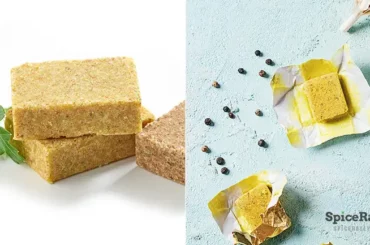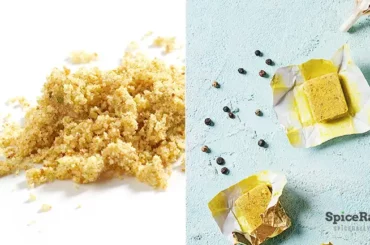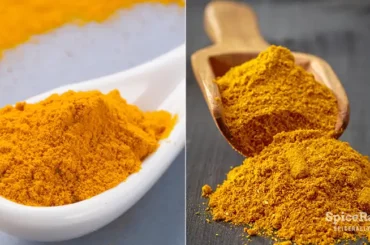Adobo and taco seasoning blends are widely used in Mexican cooking. Hence, we thought of explaining everything you need to know about adobo seasoning vs taco seasoning.
Adobo seasoning usually contains turmeric powder and a strong punch of oregano which you don’t typically get to savor in taco seasoning. On the other hand, most taco seasoning recipes could contain red chili flakes which is not an essential ingredient in adobo seasoning. Therefore, they can differ slightly in flavor and sometimes in color.
So, keep reading to learn how these two seasoning blends would actually differ.
Adobo Seasoning vs Taco Seasoning
| Adobo Seasoning | Taco Seasoning | |
|---|---|---|
| Main ingredients | – Turmeric – Black pepper/ white pepper – Garlic powder – Ground cumin – Onion powder – Dried oregano It might also include: – Paprika – Salt – Chili powder – Dried lemon/lime peel – Monosodium glutamate (MSG) – Anti-caking agents (tricalcium phosphate/ silicon dioxide) – Sunflower oil | It could also include: – Ground cumin – Chili powder – Paprika – Black pepper – Garlic powder – Red chili flakes – Onion powder – Dried oregano It might also contain: – Cayenne pepper – Sugar – Salt – Corn starch – Wheat flour – Citric acid – Soybean oil |
| Base Flavor | Spicy and tangy | Spicy and tangy |
| Flavor profile | Typically has an earthy, smokey, pungent, and salty undertone. It can be more profound and spicy if chili powder and paprika are used. | Savory, earthy, spicy, and slightly smokey with a warm hint. It can be hotter than adobo seasoning if red chili flakes and cayenne pepper are included. |
| Texture | A powder-like, dry mixture | A powder-like, dry mixture |
| Mode of usage in cooking | As an ingredient when cooking. | As an ingredient when cooking. |
| Color | Has a yellowish shade if no paprika or chili powder is included. | Has a vibrant reddish-brown color. |
| Usages in cooking | – Primarily used to season meat and vegetables. – As a sprinkle over warm and crisp fries and chips. – It can be mixed into ground meat mixtures to make meatballs, burger patties, sausages, etc. – As an ingredient when making corn, yuca, and various other types of savory fritters. – In making Mexican/ Caribbean-style kidney bean dishes. | – Used mainly in making fillings for tacos – It can be used in enchiladas and casseroles. – As a great taste-maker in taco soups, pasta and noodle dishes. – It can be incorporated into chili. – Used to season minced meat like beef, pork, veal, chicken, etc. |
| Origin | Latin America/ Caribbean/ Spanish cuisines | Mexican cuisine |
| Mode of production | Both homemade and store-bought options exist. | Both homemade and store-bought options exist. |
| Availability | – Usually available in jars and containers. – It can be readily purchased from online sellers and can also be bought from leading supermarkets or grocery stores. | – Typically comes in packets. And can also be bought in bottles/ containers. – Widely available in supermarkets, local grocery stores, and online shopping sites. |
| Storage | – It would be best when stored in a tight-fitting glass spice shaker/jar/container/ – Can be kept with the rest of the dry herbs and spices inside your spice cupboard/rack where no direct sunlight falls with zero humidity or moisture. | – It would be best when stored in a tight-fitting glass spice shaker/jar/container/ – Can be kept with the rest of the dry herbs and spices inside your spice cupboard/rack where no direct sunlight falls with zero humidity or moisture. |
Digging Deeper Into The Difference Between Adobo Seasoning And Taco Seasoning…
These two seasoning blends are actually very hard to determine due to the subtle dissimilarities they possess. In fact, their differences count down to a matter of a few ingredients and their quantities.
In essence, adobo seasoning usually contains a bit more dried oregano than taco seasoning. In addition, adobo seasoning also has turmeric, while most taco seasoning options show up with red chili flakes, and some even contain cayenne pepper.
Consequently, both of them can be slightly different in flavor, heat level, and in color, respectively. Nevertheless, they are comparable in other ingredients, and both can be used interchangeably when it comes to taco fillings.



